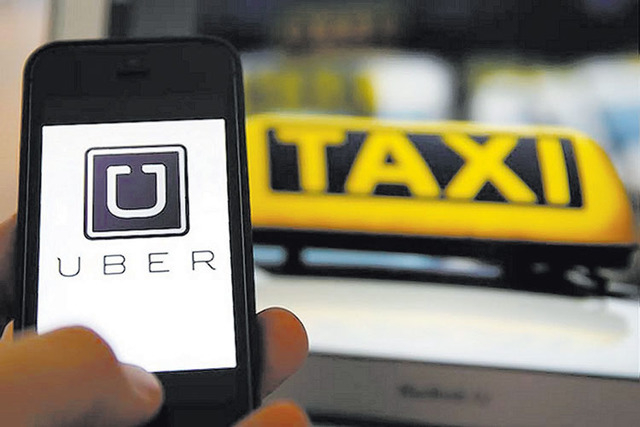Most Uber rides take passengers to Strip, report says

Most of the rides Uber drivers have provided to customers in Southern Nevada have taken passengers from local neighborhoods to the Strip, company officials said Thursday.
A report posted on Uber’s blog site by Conor Myhrvold of Uber’s data science and analytics team said 40 percent of the company’s rides in the first two weeks of operation ended on the Strip, not surprising because the company stated that it would focus efforts in neighborhoods and initially not pick up passengers at Strip resorts or at McCarran International Airport.
Before the startup, Uber officials said they planned to focus on a perceived weakness of Southern Nevada’s taxi companies’ operations — serving local neighborhoods.
The strategy seems to have worked because not only can Uber drivers quickly reach customers in neighborhood communities, they also can avoid enforcement officers working the Strip that have vowed to cite drivers and impound their vehicles.
The company did not disclose the number of rides it has provided since starting operations on Oct. 24, only saying it was “thousands.”
From a regulatory perspective, Uber is operating illegally because drivers aren’t licensed by the Nevada Transportation Authority or the Nevada Taxicab Authority.
Myhrvold said the Strip was by far the most popular destination in Las Vegas, and the next two most popular district destinations were east of the Strip followed by downtown Las Vegas.
East of the Strip is the most popular ride origin district, followed closely by western neighborhoods. Excluding the Strip as a destination, the most popular trip routes were those originating and ending in the east, followed by downtown from the east.
“Right now, Uber doesn’t pick up on the Strip or McCarran Airport, which means no trips originate from either of those locations (hence, the low density of trips that begin in the corresponding districts),” Myhrvold wrote. “But Uber does bring a lot of riders to the Strip, from which they use existing transportation options like taxi or limo services to get back home.”
Earlier this week, representatives of Nevada’s insurance industry said insurance companies could revoke Uber drivers’ personal automobile insurance if they’re caught transporting customers because coverage doesn’t include them operating commercially.
Michael Geeser, president of the Nevada Insurance Council, said drivers probably would be caught only if they attempt to file a claim after an accident, noting that most companies don’t have investigators reviewing an individual’s private use.
Uber officials indicated they were not concerned about the insurance industry’s disclosures to the Nevada Transportation Authority because they have a separate $1 million liability policy covering drivers when they have passengers in their cars.
Geeser said questions would occur if a driver filed a claim on an accident while using the Uber app to find customers while not having an Uber customer in the vehicle.